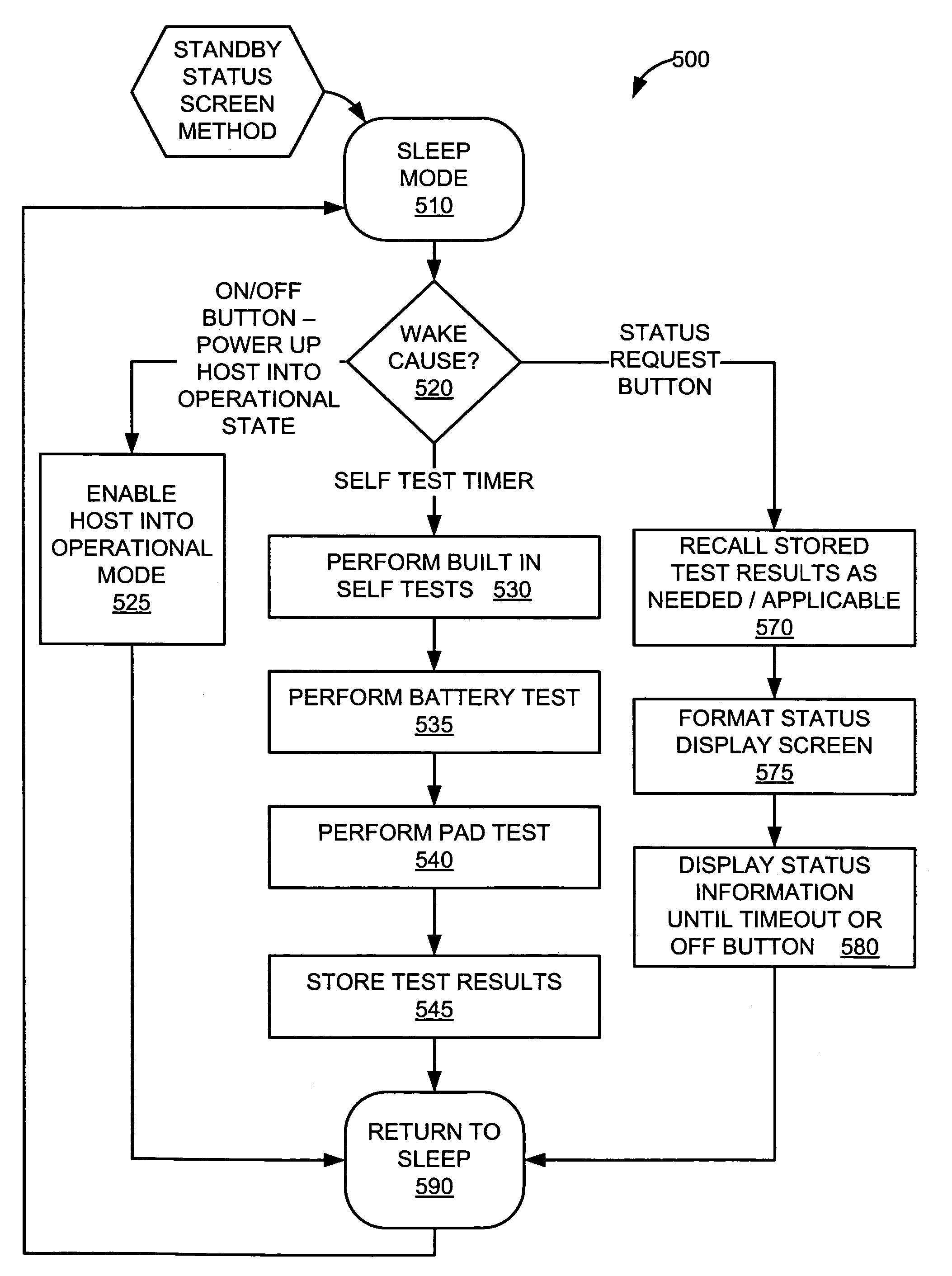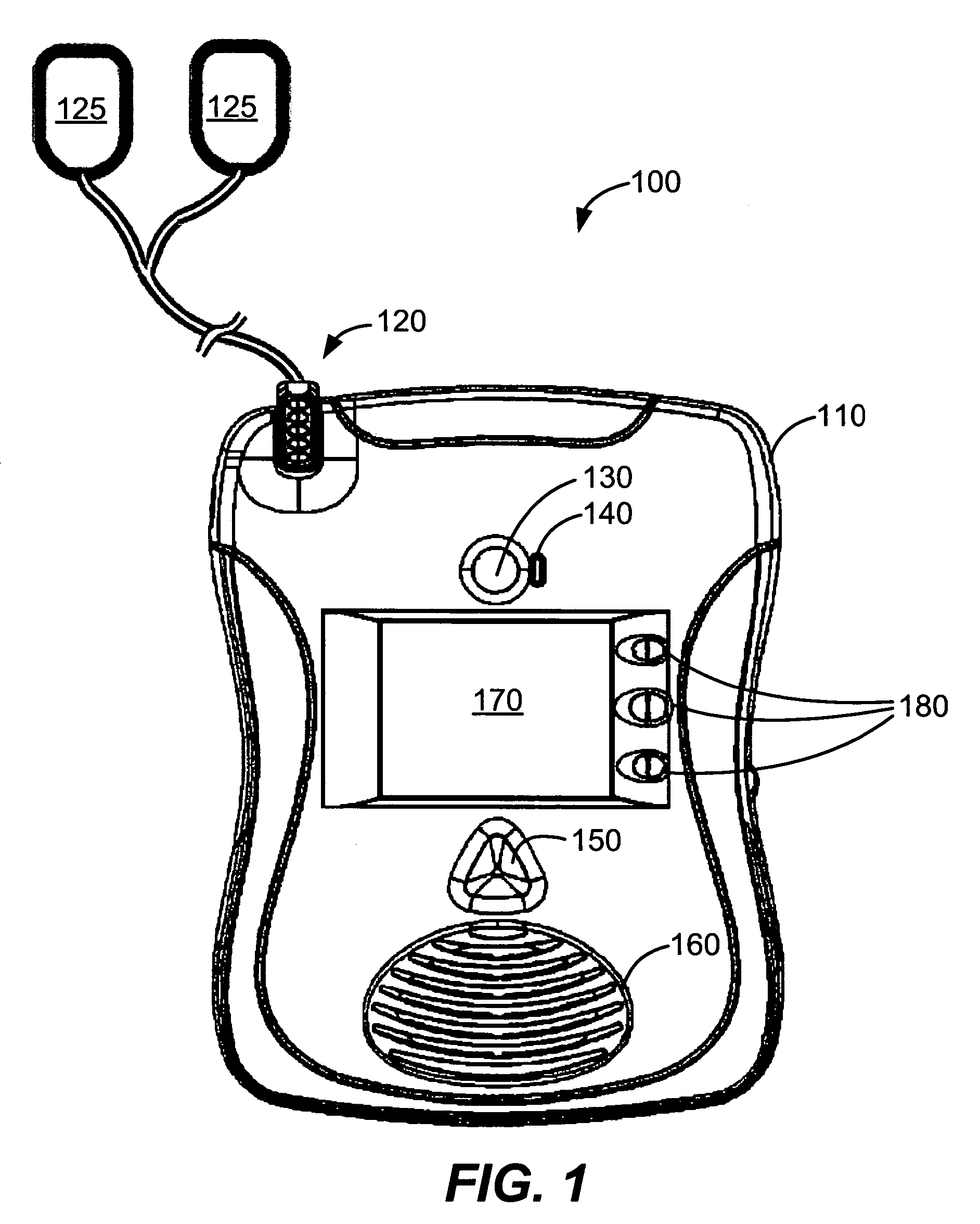System and method for presenting defibrillator status information while in standby mode
a defibrillator and status information technology, applied in the field of standby mode defibrillator status information for portable cardiac defibrillators, can solve the problems of unnecessarily consuming electrical power relative to the shelf life of a portable aed, unable to place the aed back into the non-operative state or standby mode, and unable to meet the needs of conventional aeds, so as to save the battery power of the ae system
- Summary
- Abstract
- Description
- Claims
- Application Information
AI Technical Summary
Benefits of technology
Problems solved by technology
Method used
Image
Examples
Embodiment Construction
[0024]The inventive status indicating system may comprise an automatic external defibrillator (AED) with a built-in video display that presents status information without placing the AED into a fully operational state and in response to single button activation. The display driver electronics, as well as the display itself, may provide for rapid update between images or frames so as to enable full-motion video when the AED is in a fully operational state. The video display may be used to display patient ECGs, operator instructions, system status, training scenarios, or other information, video or user interface elements relevant to the functionality or use of the AED.
[0025]The inventive status indicating system may comprise a low power standby processor. The standby processor can react to operator inputs, power the main processor on and off to perform basic system status tests, power the main processor on and off for full operation of the AED, operate status indicators, and power th...
PUM
 Login to View More
Login to View More Abstract
Description
Claims
Application Information
 Login to View More
Login to View More - R&D
- Intellectual Property
- Life Sciences
- Materials
- Tech Scout
- Unparalleled Data Quality
- Higher Quality Content
- 60% Fewer Hallucinations
Browse by: Latest US Patents, China's latest patents, Technical Efficacy Thesaurus, Application Domain, Technology Topic, Popular Technical Reports.
© 2025 PatSnap. All rights reserved.Legal|Privacy policy|Modern Slavery Act Transparency Statement|Sitemap|About US| Contact US: help@patsnap.com



